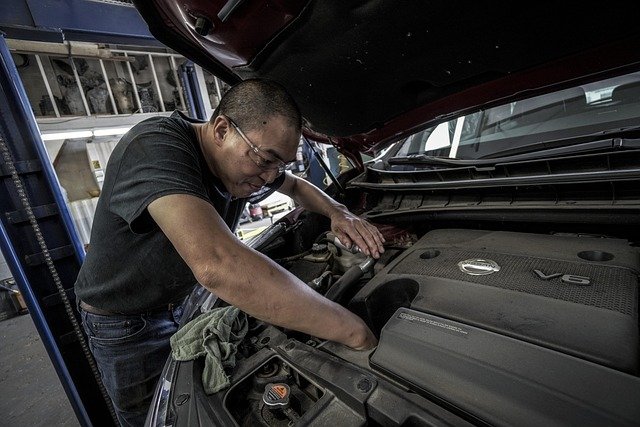Automotive Technician Training: Launch a Stable Career
Explore how automotive technician training equips you with mechanical know-how and modern diagnostic skills to service today's vehicles. From short certificate courses and two-year associate degrees to paid apprenticeships and manufacturer-specific programs, this guide covers program lengths, training sites, costs, career prospects, and essential skills to start a reliable, in-demand trade in vehicle repair.

Introduction The automotive world is shifting as cars incorporate more electronics, sensors, and software. Today’s mechanic training combines hands-on repair techniques with electronic diagnostics and systems troubleshooting. If you enjoy working on vehicles or want a dependable skilled trade, organized training delivers the tools to identify problems, carry out repairs, and keep a wide variety of vehicles on the road.
Program length: what to expect How long training takes depends on the route you choose and how advanced you want to be: - Certificate programs: These short, focused options commonly run 6 to 12 months and cover core repair tasks and basic diagnostic methods. - Associate degrees: Offered at many community colleges, these two-year programs mix classroom instruction with lab and shop experience for broader technical grounding. - Apprenticeships: Typically 3 to 5 years, apprenticeships combine paid, on-the-job learning with formal coursework and mentorship from experienced techs. - Manufacturer-specific training: Tailored to a particular brand or platform, durations vary based on the curriculum and employer arrangements. Each path requires a time commitment but provides foundational skills needed for a durable career in vehicle service.
Where to get trained There are several avenues for formal automotive education: - Vocational and technical schools: Practical, shop-focused programs that prioritize hands-on skills. - Community colleges: Often provide associate degrees and a wider technical curriculum along with general education classes. - Apprenticeship programs: Run by employers, industry groups, or unions; they let you earn while you learn and gain real-world experience. - Manufacturer training programs: Carmakers and dealer networks offer specialized instruction for technicians who will service their vehicles; these may be employer-sponsored. - Online courses: Useful for theory, electronics fundamentals, and software-based diagnostics, but they can’t replace physical practice in a shop environment. When comparing options, check accreditation, program scope, instructor credentials, shop equipment, and job-placement support.
Career outlook and opportunities Technicians with solid training remain essential as vehicles grow more complex. The U.S. Bureau of Labor Statistics projects little to no change in employment for automotive service technicians and mechanics from 2020 to 2030, yet the industry is expected to create roughly 69,000 openings per year over the decade due to retirements and worker turnover. Typical workplaces include: - Independent repair garages - Dealership and OEM service centers - Fleet maintenance units for commercial or municipal vehicles - Self-employment or owner-operator of an independent shop With experience and certifications, technicians can transition to supervisory roles, specialize in hybrid/electric systems, advanced diagnostics, performance tuning, or launch their own repair businesses.
Key skills for success Success in this field blends technical ability with practical and interpersonal traits: - Mechanical aptitude: Understanding how parts and systems interact is fundamental. - Diagnostic and problem-solving skills: Pinpointing root causes and selecting effective fixes is central to the job. - Attention to detail: Small symptoms can indicate larger issues; careful inspection matters. - Physical stamina: The role often involves standing, lifting, and working in tight or awkward spaces. - Communication: Technicians must explain repairs to customers and coordinate with colleagues clearly. - Continuous learning: Vehicle technology evolves quickly, so staying current with new systems and tools is essential. - Computer literacy: Reading ECU data, using diagnostic software, and navigating repair databases are daily tasks. Developing these abilities during training improves employability and long-term career prospects.
Costs and financial considerations Training expenses vary by program, length, and provider. Typical ranges include: - Certificate programs: Often fall between $1,000 and $5,000, though intensive hands-on programs can cost more. - Associate degrees: Commonly range from about $5,000 to $25,000 depending on institution and residency status. - Apprenticeships: Frequently low-cost or free to trainees since you earn while you learn; many employers cover classroom fees. - Manufacturer training: Costs differ; employer sponsorship or dealer networks sometimes subsidize or cover tuition. Program prices can vary widely—some technical institutes list higher tuition, while community college paths are usually more affordable. Always confirm current tuition, available financial aid, scholarships, and employer sponsorships before enrolling.
Choosing the right path Pick a route based on your timeline, budget, and long-term goals: - Fast entry: Certificates or apprenticeships let you join the workforce quickly. - Broader education and advancement: An associate degree offers a deeper technical foundation and broader opportunities. - Brand-focused careers: Manufacturer programs are best if you plan to work at a dealership or OEM service center. Consider accreditation, facilities, amount of hands-on training, instructor experience, and job placement rates when evaluating programs.
Conclusion Training as an automotive technician opens the door to a stable, hands-on profession that merges traditional mechanical skills with modern electronics and diagnostic tools. Whether you pursue a certificate, associate degree, apprenticeship, or manufacturer-led training, investing in solid instruction and continual learning will prepare you to succeed as vehicles continue to evolve. Research programs carefully, weigh costs and outcomes, and pursue certifications or specialties that align with your interests to maximize your career potential.






